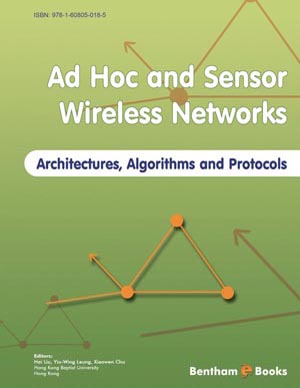Abstract
In wireless ad hoc and sensor networks, some nodes are battery operated. They have a limited amount of energy that can be difficult, expensive or even impossible to renew like in forest fire detection, nuclear plant monitoring or explorations in hostile environments. The challenge for these networks consists in maximizing network lifetime by means of energy efficient techniques. In this chapter, we first introduce basic concepts with regard to energy efficiency and present the four classes of energy efficient techniques: energy efficient routing, node activity scheduling, optimizing the transferred information and adapting transmission power to the topology. We then focus more particularly on energy efficient routing and classify existing protocols according different criteria: data centric, hierarchical, geographical, energy criteria used for route selection, multipath routing and support of sleeping nodes. We present EOLSR, the energy efficient extension of the OLSR routing protocol supporting different types of networks like IEEE 802.11 and IEEE 802.15.4. We compare its performance with multipath routing. Node energy consumption can be considerably reduced by scheduling node activity. We will briefly present SERENA that increases not only the network lifetime but also the amount of user data delivered. Hence, SERENA contributes to a more efficient use of energy and can be used with any routing protocol. To design a network protocol, two approaches have been traditionally used: a generic one that can lead to poor performance for some applications and the opposite one, specifically designed for a given application (e.g. data gathering). An inbetween approach taking into account application specificities and environmental constraints by means of cross layering provides a very promising trade-off leading to improved performance and reactivity. We show how EOLSR benefits from cross layering with (1) the MAC layer by a better reactivity to topology changes and (2) the application layer by a reduced overhead. This induces an increased network lifetime






















